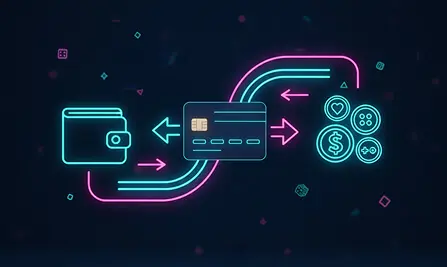What is 3D secure authentication?
As part of bank card services, issuers are obliged to guarantee the safety of customers’ funds. This affects the reputation of the credit organisation, so the security of online purchases is given great attention. Banks use different ways to protect customers, one of the most popular technologies is 3D Secure.
3D Secure is a kind of XML-protocol, which is used as an additional level of security when making transactions with bank cards on the Internet. The protocol provides for two-factor authentication of the client before the transaction is completed.

How does 3D authentication work?
- The customer selects a portal where he/she plans to make a payment, for example, paying a bill on a bookmaker’s website, paying for delivery of ready-to-eat food or any other service.
- The client chooses the method of payment by bank card, and then enters the card data, including its number, expiry date and security code.
- After confirming the purchase, the customer will be redirected to the 3D Secure page belonging to his card issuer.
- In the fourth step, the user is prompted to choose one of the actions:
- a pre-set password;
- a one-time authentication code sent by SMS to the phone, in an e-mail, in a notification in the bank’s application;
- an answer to a unique question chosen by the client.
- The choice depends on the bank’s security protocol.
- At the next step the bank checks the card details, if they are entered correctly, the payment will be authorised.
Strengths of 3D authentication
he 3D Secure technology for protecting online payments was developed in 2001 and was then actively implemented by card issuers. This led to greater popularity of online transactions, as the number of fraudulent transactions decreased.
There are several undeniable benefits to the security protocol that are important not only to the card issuer, but also to the cardholder.
Increased security. The main and most important advantage of 3D Secure is the prevention of card data theft, which protects customer funds.
Fraud protection. 3D Secure serves as a powerful barrier against credit card fraud, protecting buyers and sellers. Cardholders are protected from receiving credit for purchases they did not make. In an era of the popularity of online transactions, an extra layer of security doesn’t seem unnecessary, with only a few seconds to complete.
3D authentication has no weaknesses, except for disruptions in banks’ services. But in case of a failure in the work of financial organisations, normal payments will not go through. 3D Secure benefits both merchants, who are protected from disputes and reimbursement of services if the payment was made by fraudsters. Customers are safe as they have to enter a code that comes to their device to make a purchase.
What does 3D Secure authentication failure mean?
During a transaction to pay a bill or service, an error message may appear. Such a notification means that the user has made an error when making a payment and has failed 3D authentication.
Among the most common problems that lead to cancellation of payment authorisation is an error with entering details. Incorrect card details – card number, expiry date, name on the card, CVC security code or incorrect code for authentication. If an error is made at any of the stages, the payment will be rejected.
If the customer has entered incorrect card data, the card issuer sees this error and does not confirm the payment. This solution is related to fraud protection. This measure allows to protect the user from unauthorised debiting of credit or debit card. You may be directed to enter the confirmation code every time, but if you lose your card or its number becomes publicly available, this solution seems reasonable, as fraudsters will not be able to use the card for online purchases.
What to do if an authentication error message appears
When you receive an error message when making a payment, you should not panic and get upset. In this situation, you should go back to the payment page and check the details or see if you have entered the confirmation code correctly. Usually the payment gateway provides for re-entering the code or requesting a new one.
If the card details are entered correctly and the security code is correct, but the payment fails, the 3D Authentication failed error message still appears, you should first disable all extensions in your browser, including those that block pop-up windows.
The presence of browser extensions can cause payment authentication failure and incorrect operation of the 3DS page. If disabling extensions again fails to confirm the debit, you should try using a different browser. If this option does not help to solve the problem, you should send a request to the support service of the bank that issued the card.
3D Secure authentication may be affected by a technical error in the system. Such a failure in the work of the technology will lead to the fact that it will not be possible to get a confirmation code. In this case, you should wait a couple of minutes and perform the payment again. If failures in the work of authentication of payments are repeated, you should contact the support service of the bank issuer.
If there are technical problems in the work of 3D Secure authentication, you can use alternative payment methods. If there is no such possibility, you will have to wait for the service to be restored.
FAQ
What is 3D secure authentication?
3D Secure (three-domain structure) authentication, also known as payer authentication, is a security protocol that helps prevent fraud in online credit and debit card transactions. Through this protocol, banks can ask for additional customer data to confirm a transaction, usually a code from an SMS or push notification in the bank’s app.
Which countries use 3D secure authentication?
3D Secure technology is widely used in the European Union, Australia, India, Brazil, Mexico, Singapore and countries in Europe, Asia, America and Africa. The technology helps to reduce the risk of fraud when paying for goods and services from a bank or debit card balance. For example, 3D Secure authentication is not common in the US. In this country, the popularity of card fraud is on average four times higher than in the European Union.
What should I do if 3D secure authentication fails?
If you receive an authentication error when making a payment, for example, a ‘3D authentication failed’ notification, it means that you made a mistake with entering the transaction confirmation. You should re-enter your code or password, while checking the language layout and whether the Caps Lock option is enabled on your keyboard.
If the authentication error is not resolved during the transaction, you should contact your debit or credit card issuer. This is usually a bank, but e-wallets can also issue cards. In your request to the card issuer’s support service you should describe the situation where the payment was made, but do not give the card number and security code.
Which cards support 3D secure?
Almost 100% of issued bank cards support the 3D secure security protocol. The protocol itself is important, as in different payment systems its name may differ: Visa calls the protocol Visa Secure, Mastercard fixes Mastercard SecureCode, UnionPay mentions UnionPay Secure.
3D secure technology is supported by the bank itself, so it does not matter whether you have a debit or credit card. In most banks, the security protocol is activated automatically when the card is issued, but there are those where 3D secure must be connected independently. The service is free of charge. If you have doubts about the level of protection, you can call the card issuer’s hotline and clarify whether 3D secure is connected or not. When communicating with the support service, it is not allowed to name the full number of the card and the security code on the back side. To verify the user, the bank’s support service may request an answer to a secret question, which the client chooses when applying for a card.








